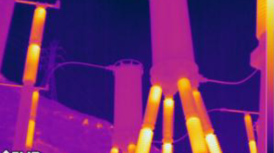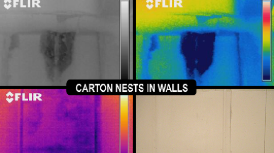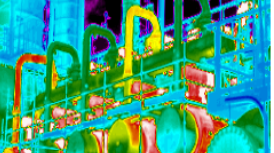A 16-year Roof Moisture Study
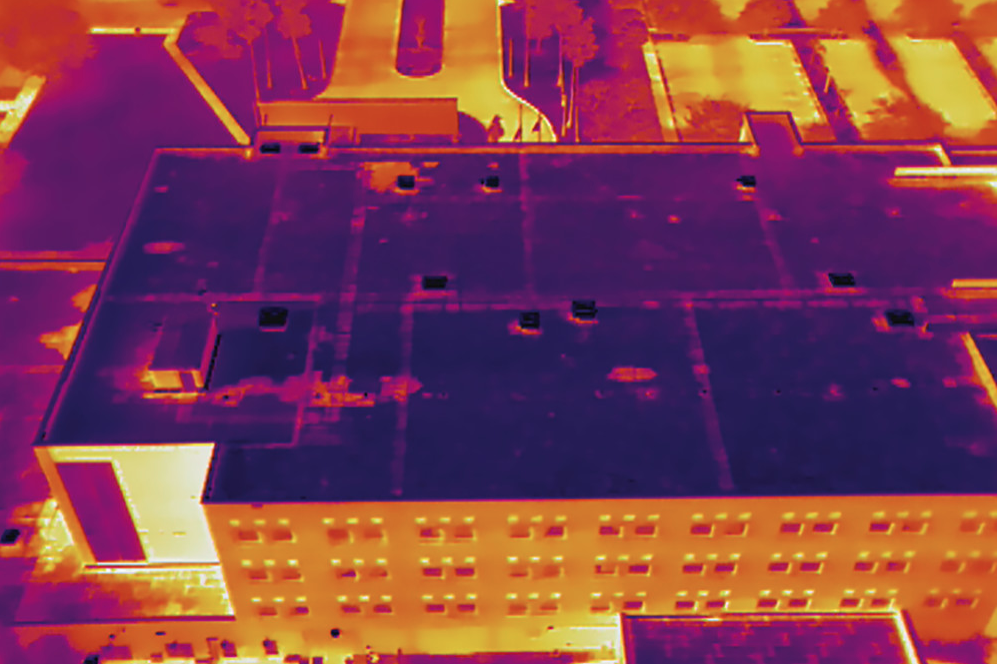
InfraMation 2018 Application Paper Submission
Gary Orlove
Infrared Training Center
ABSTRACT
On a spring day in 2002, I happened to look at the roof of a newly constructed hotel with an infrared camera and was amazed to find moisture damage built in to the roof. I have visited this same roof many times over a 16-year period and have recorded images of the spread of the moisture damage. 2018 marks the end of the long-term roof study and the results are presented in this white paper.
INTRODUCTION
A thermographic flat roof survey is used to locate and identify moisture laden areas within roof substrates (specifically insulation). Under clear sky, daytime conditions, the roof acts as a large thermal collector, and can approach 160°F during summer months. Moisture laden insulation under these conditions store a greater amount of solar energy than dry insulation. After sunset, the wet areas take longer to cool than the dry areas because of this additional stored energy. As a result, a thermographically visible surface temperature difference is produced between wet and dry insulated areas.
THE ROOF
The roof I surveyed was located on a brand-new hotel in the Orlando, FL area. An aerial view of the hotel and the specific roof sections I investigated are shown in Figure 1. These roofs have a western facing elevation.
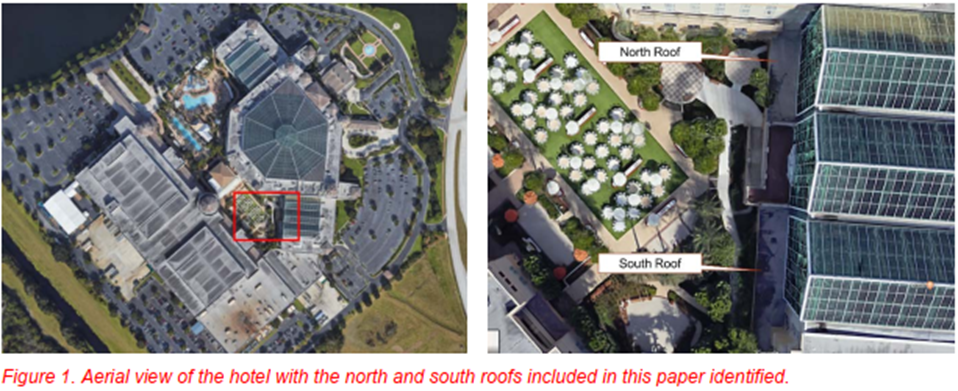
I revisited these roofs at the same time of year (spring) during several years from 2002 to 2018. The results of are shown in the next sections.
THE NORTH ROOF
The north roof started its life in 2002 with two areas of wet insulation as shown in Figure 2. Subsequent images show how other sections of the roof were saturated during the years, these new areas are outlined in red.
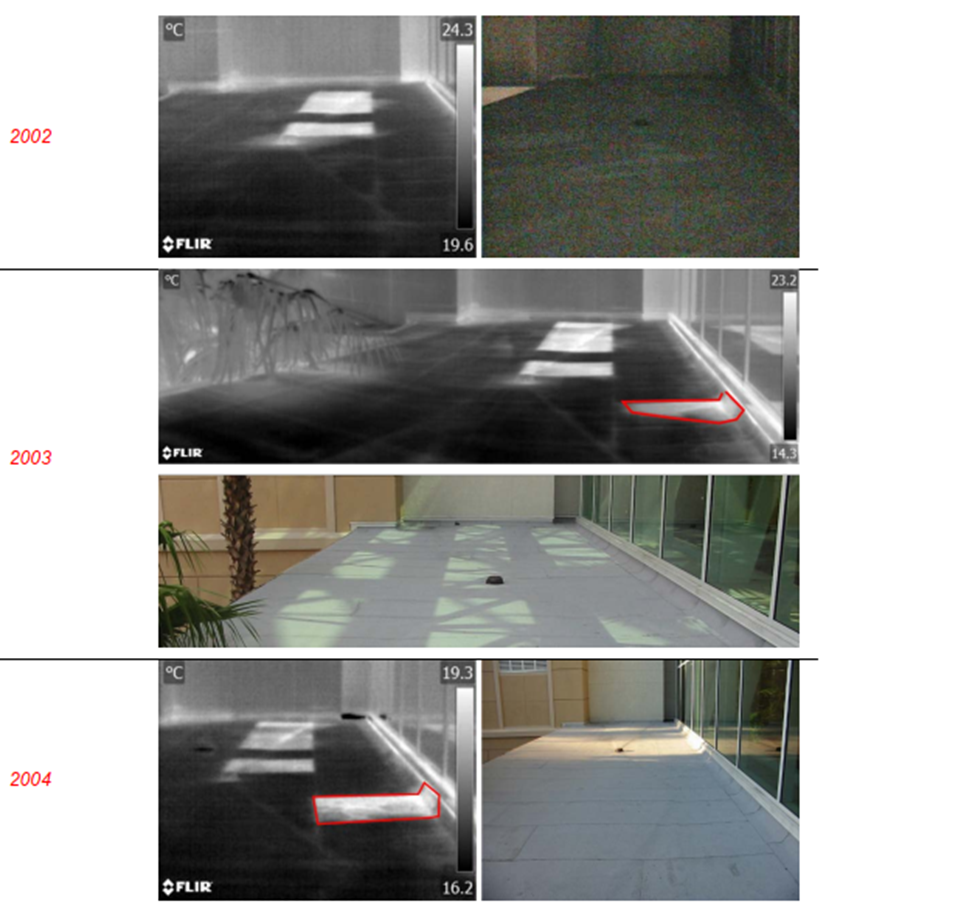
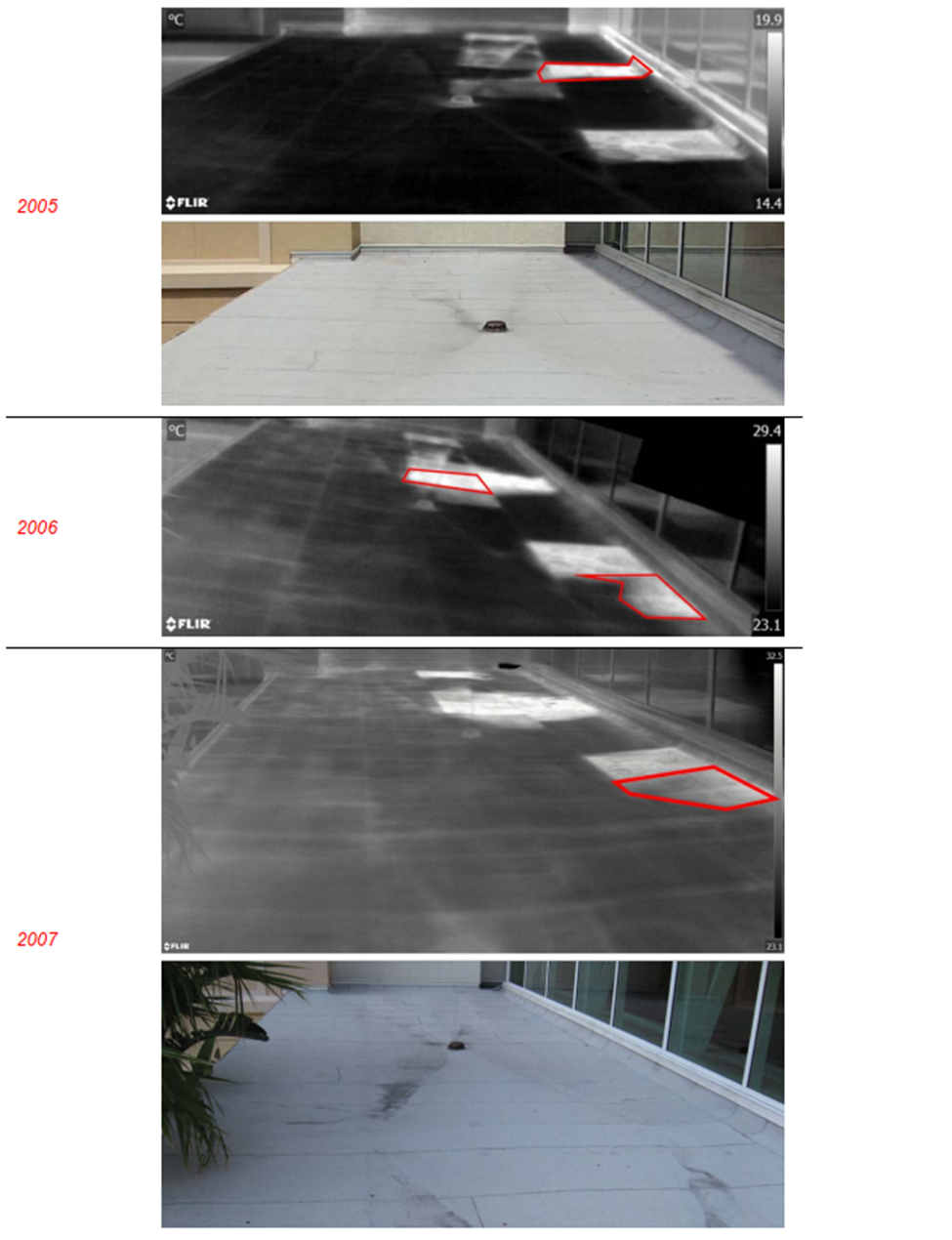
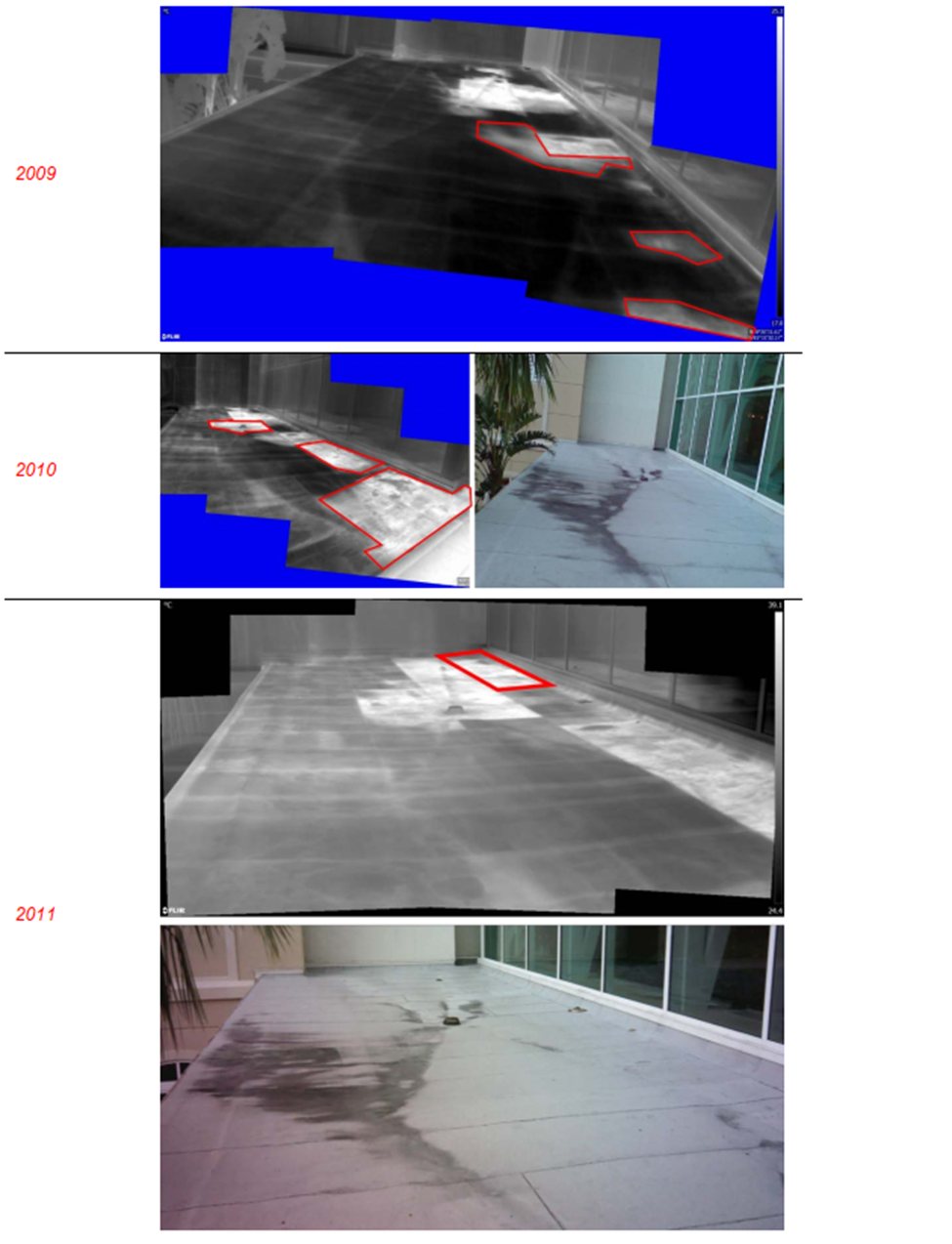

SOUTH ROOF
The south roof also started life with a wet area in the far corner. This roof remained the same until around 2009, when we see some major degradation spreading throughout. When I visited in 2018, the roof had been turned into a restaurant patio as shown in the final images.
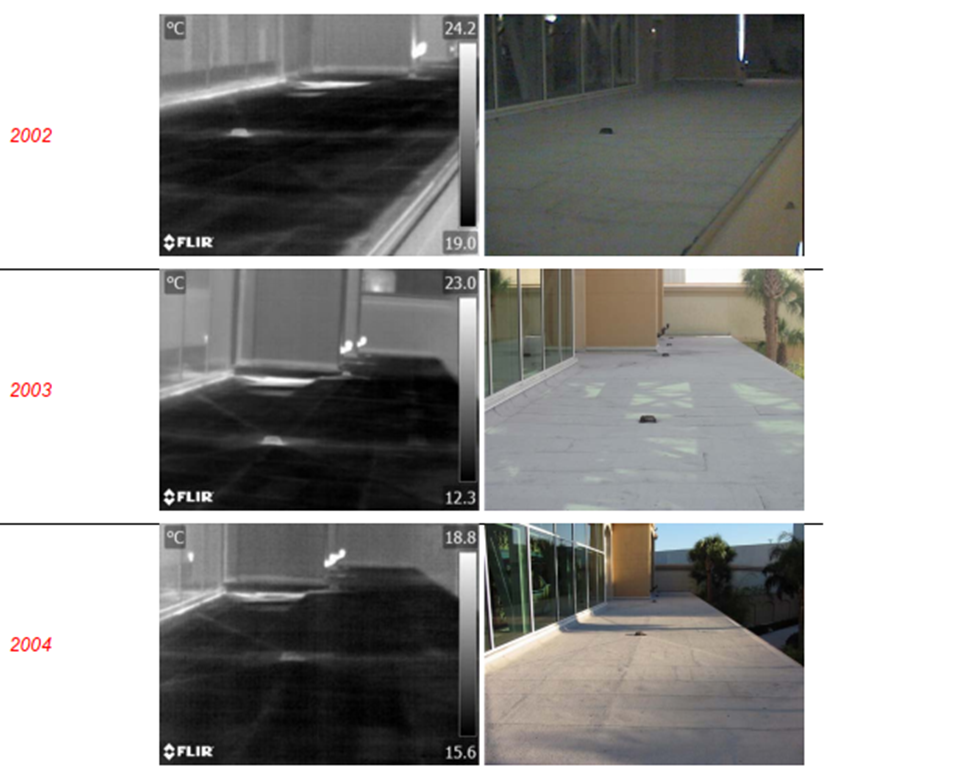
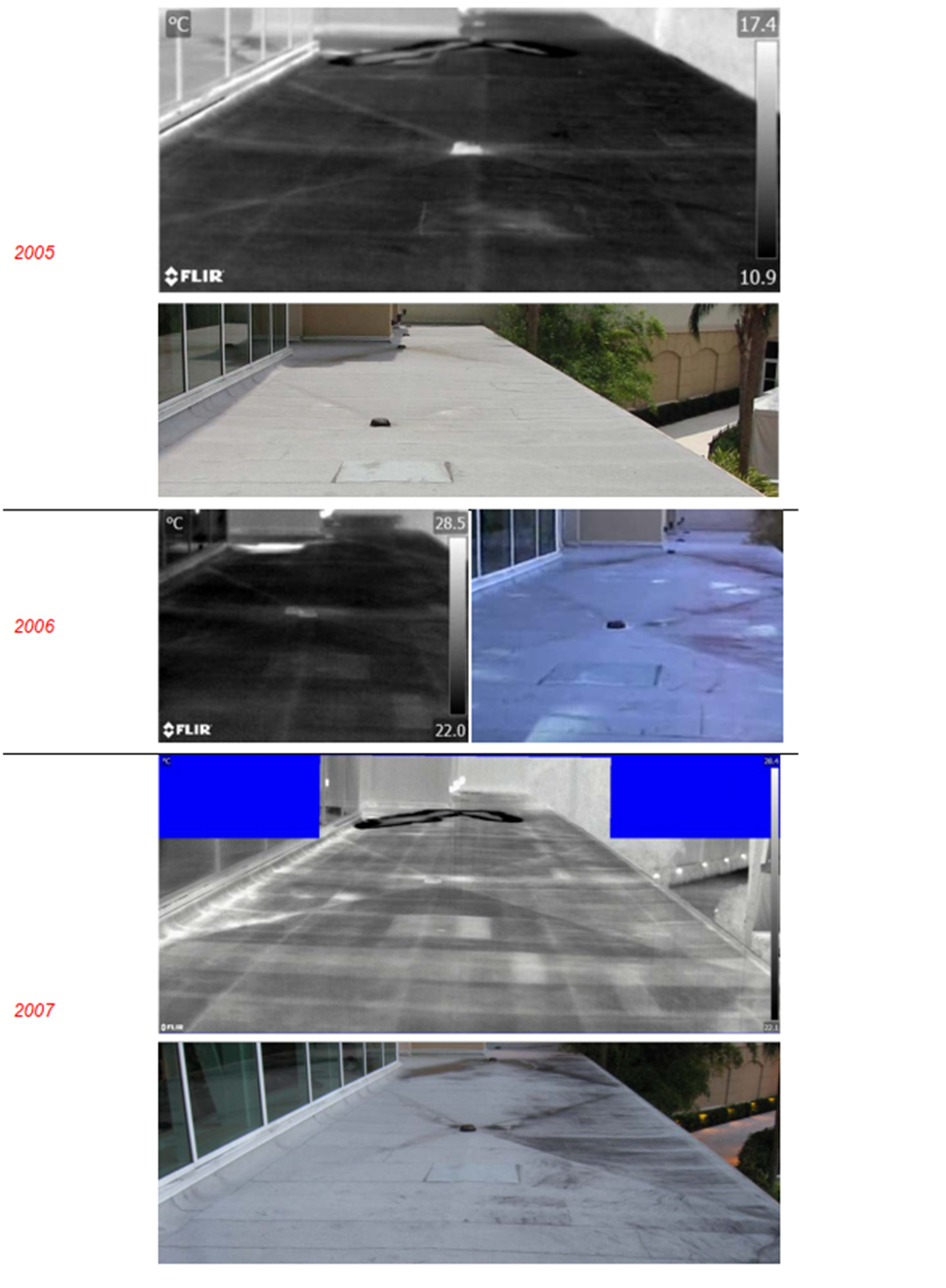
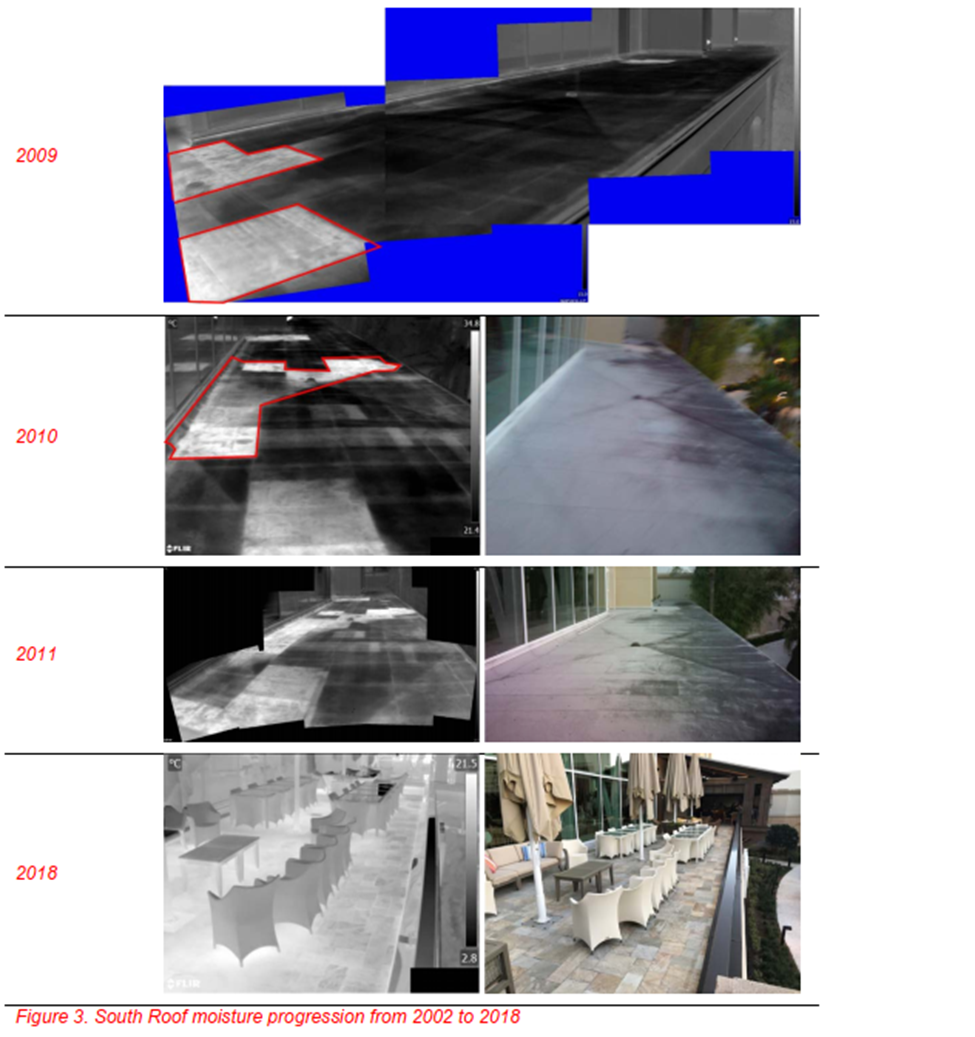
SUMMARY
This study clearly shows that roofs only go from bad to worse, like a cancer spreads throughout the body. The sooner a problem can be resolved and repaired, the less it will cost the building owner.
ABOUT THE AUTHOR
Gary L. Orlove, P.E.
ASNT NDT/PdM Level III, TIR #80091, BINDT IRT L3-MC, L3-CV
Gary holds degrees in Energy Engineering and Zoology from the University of Wisconsin. He has been using Infrared Thermography since 1975. During that time, he has accumulated experience in field diagnostics as a consultant to industry and has worked for three major manufacturers of infrared imaging equipment. Gary has published several papers on the technology and its applications. In 2000, he cofounded the InfraMation Conference, the largest annual IR conference for thermographers. Gary is active on ASNT, ISO, and ASTM Infrared Thermography Committees and holds a professional engineer's license.
